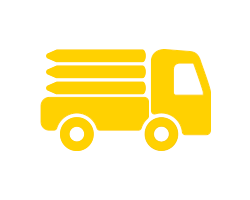Goldpine
Mt Hutt Station
An idyllic sunrise rose to meet us as we arrived at Mt Hutt Station. Its entrance ushered us into the 7,000-acre deer farm teeming with early morning life: livestock grazing, dogs barking, and tractors kicking into gear. Framed by the iconic Mount Hutt, the snowcapped mountains offered a fitting introduction to a farm with a history as rich as this. We chatted with Bruce Hood, who, together with his wife Becky and parents Keith and Dennise Hood, owns and operates Mt Hutt Station.
The Hood family is a pioneer of deer farming in New Zealand. The station’s journey began in 1978 when Bruce’s father Keith and uncle Doug purchased the property at auction, paying a then-remarkable million dollars. “It was a talking point. They turned up to the auction in their work clothes, and I think it was one of the first farms in New Zealand to go for a million,” Bruce said.
At the time, the land was home to 15,000 sheep and 500 cattle, and was considered rundown. The brothers were determined to transform the property, with Keith focusing on farming and Doug bringing contracting expertise. Dennise was - and still is - integral to the farming operation, whether it be caring for her children or grandchildren, or cooking up a roast for the staff, this farm is a full family affair.

The 1980s marked a pivotal shift towards deer farming. “My father decided it was a good idea to do something new; jump out of helicopters and catch deer,” Bruce laughed. He explained that Keith’s day job was a farmer, and his early morning and night job was gradually catching more deer, building the herd while reducing the number of sheep. By the late 1980s, they had established a significant deer population.
Today, Mt Hutt Station is run by Bruce and Becky in conjunction with Bruce’s parents, with help from their children. They also have two key staff members, Charlie and Jimmy, who help keep the farm operating. Becky manages the administration side of things and assists where needed with the deer, and both Bruce and Becky handle all farming consents. The farm runs approximately 8,000 head of deer, 2,000 stags for velvet production, 2,500 for venison, and 3,000 breeding hinds, and maintains around 300 cattle. The operation focuses on red deer with European genetic influences, carefully selected to improve stock quality, and bred for velveting and venison.

“We’ve had deer from all over the world. We’ve had German, Swedish, English, Hungarian, Yugoslavian. The genetic pool has improved dramatically since importing these deer.”
Mt Hutt Station velvets about 2,000 stags, which Bruce said was a set number chosen to avoid overstocking. “We could go up in numbers, but we’re comfortable with that; we’re not overstocking.” Two and a half thousand deer are killed for venison, ranging from young stock to older. “Older stags are probably the problem at the moment. There is a certain timeframe where you can send them to the works,” he added.
Bruce and Becky’s family is integral to the station’s future. Their four children are very involved in the operation. Their oldest son, Harry (24), works in contracting and helps on the station between seasons, particularly with cultivation and silage. Passionate about big machinery like his grandfather, he’s learning from him and plans to head to the UK for contracting work. Olly (22), a helicopter pilot, was inspired by his grandfather’s stories of live deer capture. He’s currently building his flight hours and assists with mustering deer from the air when home between jobs. Maggie (20), is studying at Canterbury University, and Lucie (18), in her final year of school, are key to the velveting process during summer. Both are skilled tractor operators and assist wherever needed. All four children have been involved in the farm from a young age, Becky said. “As a family we work extremely well together and will continue to into the future,” she added.

Bruce emphasised the unique advantages of deer farming in this environment. “Because this is the deer’s natural environment, they certainly handle the snow and the weather. We’re in two environments: the Southwest and the Northwest. We can change from the 2,000ml rainfall here to 1,000ml just 10 kilometres further up the gorge. That side of it can be challenging,” Bruce said. “We have a little bit of irrigation at the far end just to get guaranteed grass, because when the hinds are fawning, we can’t move them.” Bruce emphasised the unique advantages of deer farming in this environment. “Because this is the deer’s natural environment, they certainly handle the snow and the weather. We’re in two environments: the Southwest and the Northwest. We can change from the 2,000ml rainfall here to 1,000ml just 10 kilometres further up the gorge. That side of it can be challenging,” Bruce said. “We have a little bit of irrigation at the far end just to get guaranteed grass, because when the hinds are fawning, we can’t move them.”
The station’s approach to deer management is notably low-intervention, with minimal drenching and infrequent handling required.
“That’s the beauty of deer: you’re always learning with them, and there are no experts. When you think you know everything about them, they’ll throw something up, and you think, oh, that’s new,” he laughed.

“We have a very low drench system, just drenching the young ones three times a year for worm resistance. They’re very easy to care for, so really, you could do as much as you want to with them.”
Environmental sustainability is a priority. The Hoods are progressively fencing waterways, working collaboratively with environmental organisations and the local council to minimise ecological impact. They’ve developed strategies to prevent soil damage, such as providing run-off paddocks and managing stock movement during challenging weather conditions. The Hood family have also undertaken native planting, with nearly 1,000 trees planted across the farm.

The farm’s self-sufficiency is another point of pride for the Hood family. With an impressive array of machinery, including a D6 dozer, a CAT 12 grader, and a 20-tonne digger, plus several tractors of various sizes, they handle most operational requirements in-house. Just over 100 hectares of winter feed crops like kale and fodder beet supplement the deer’s diet, ensuring consistent nutrition.
Economic challenges remain a consideration. Current venison prices hover around $10.00 per kilogramme, but Bruce said this needs to increase to make deer farming sustainable. The velvet market is also currently dependent on the Korean and Chinese markets, with limited engagement from Western markets.

“Venison probably needs to increase another $2.00, mainly because the fawning percentages of a hind are, on average, in the 80s. If you have a sheep, you can get up to 150 to 160 per cent. Beef is pretty well into the 90s. A lot of deer farmers have switched to velvet and that’s hit a bit of a speed bump, because we’ve probably overproduced the velvet. We’re only supplying two markets, Korea and China. Until it reaches the Western world as a health product, we’re a bit stuck. It’s just a matter of seeing how those markets react to the volume we’re producing over the next couple of years. As long as we can continue to get rid of the product and avoid stockpiling, then we’re fine,” Bruce said.
The station’s success isn’t just about agricultural productivity. Bruce credited Keith and Dennise’s sacrifices and hard work for creating opportunities. “I didn’t see my father that much growing up because he was always out. As soon as the sun came up, he was out, and then when the sun came down, he was in. He was shaping it, working hard to get to where we are today” Bruce explained. “In saying that, he’s spent a lot more time with his grandkids. Our children realise how lucky they are, and what sacrifices my parents put in to be in the position they are.”

Looking forward, Mt Hutt Station represents more than just a deer farming business. The Hood family’s pride rests not just in what they have built, but in what they have created for the future. “I think it’s just the fact that you can pass something on to your kids. You can give them an opportunity to grow, to be the best they can be, in the outdoors,” Bruce said. Passion for the deer also underpins life at Mt Hutt Station. “We’re in an industry that’s still quite young and quite new. You’re always finding out new things. I’ve loved the deer all the way through,” he said.

“When people come in from outside and say how lucky we are, you don’t really realise it until they tell you. This farm is probably the best place to be. We are very lucky.”

.jpg)
.jpg)

